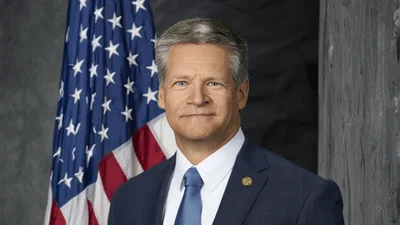WASHINGTON, DC - The Energy and Commerce Committee today unveiled a new Keystone Clock as well as an extensive, online Keystone resource center detailing the long history of the still yet-to-be approved Keystone XL pipeline. At 1,606 days and counting since the initial application was submitted to the State Department on Sept. 19, 2008, the American people are still waiting for President Obama to approve the landmark energy infrastructure project that will deliver affordable energy, jobs, and greater energy security to America.
Keystone XL remains an opportunity to help create a more secure energy future, but the clock on Keystone XL is still ticking as the president continues to delay his decision on the project. Despite the nation’s economy contracting last quarter, the president is still having difficulty saying “yes" to $7 billion in private investment that will jumpstart the economy and boost the middle class. During the 112th Congress, the House voted six separate times to advance construction of the pipeline, which estimates show will create over 20,000 direct jobs and 100,000 indirect jobs and carry nearly a million additional barrels per day of secure North American oil supplies to U.S. refineries. The landmark, shovel-ready project enjoys strong bipartisan support, and House Republicans remain committed to finding a solution to ensure the pipeline gets built.
It’s time for President Obama to stand up for middle class jobs and approve the Keystone XL pipeline. It’s #TimeToBuild the Keystone XL pipeline.
Background:
After the application to build Keystone XL was filed, the State Department began conducting the extensive environmental review known as an Environmental Impact Statement (EIS) that is required to approve a cross-border pipeline. The exhaustive environmental review was completed in August of 2011, with a finding that the pipeline would have limited adverse environmental impacts during construction and operation. In fact, construction of the pipeline was the “preferred alternative" among the options studied, including the option not to move forward with the project. Less than three months later, under intense pressure from environmentalist groups opposed to the pipeline, the president announced he will not act on the Keystone XL application until 2013 despite prior pledges of support for American jobs and an “all-of-the-above" energy approach. Congress then voted on a bipartisan basis to force the president to make a decision, which he did in January 2012 when he rejected the Presidential Permit and required TransCanada to reapply with a new route through the state of Nebraska. TransCanada submitted a new application in the spring of 2012, including a new route through the Cornhusker state. Nebraska Governor Dave Heineman approved the Nebraska reroute on Jan. 22, 2013, thoroughly addressing the president’s previously stated concerns. With the Nebraska process complete, the president is now out of excuses. Americans have been waiting long enough for Keystone’s jobs and energy.





